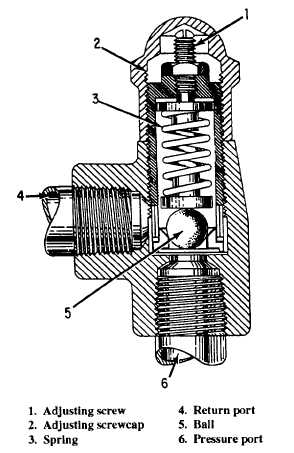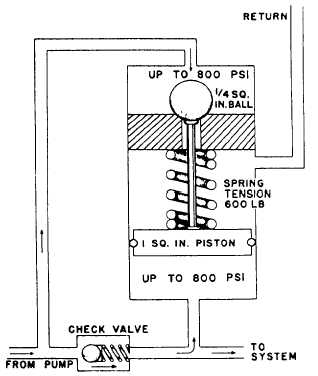
Figure 10-17.-Typical relief valve.
Pressure Regulator Valves
As the name implies, the pressure regulator valve is designed to regulate system pressure between a maximum operating pressure and a minimum operating pressure. This valve is often referred to as an unloading valve. It is designed to remove the system load from the pump once system pressure has been reached.
The functions performed by the regulator valve are accomplished by its two operational phases-cut-in and cutout. The regulator is said to be cut-in when it is directing fluid under pressure into the system. The regulator is cutout when fluid is bypassed into the return line and back to the reservoir. Figure 10-18 shows atypical pressure regulator in the cut-in position. Figure 10-19 shows the regulator in the cut out position. Notice the check valve in these figures. The check valve can bean integral part of the regulator or a separate unit, but it is necessary that a check valve be used, as shown in the figures.
Referring back to figure 10-18, you can see the pump supplies a pressure to the top and bottom of the

Figure 10-18.-Pressure regulator at the cut-in position.
regulator valve. By finding the pressure areas of the ball and piston, plus the 600-pound spring tension, you can find the balanced state of the valve-in this case, 800 psi. This means that any pressure in excess of 800 psi unseats

Figure 10-19.-Pressure regulator at the cut out position.
Continue Reading